The Missile Men of India: Reincarnation Case of Tipu Sultan | Abdul Kalam with the Reincarnation Case of Haider Ali | Vikram Sarabhai and the Mysore Past Life of Wernher von Braun
- CATEGORY
Revealed by: Spirit Guide or Spirit Being Ahtun Re in a Ryerson-Semkiw Reincarnation Research Session
From: Born Again (Indian Version)
Article by: Walter Semkiw, MD
The Spiritual and Scientific Life of Abdul Kalam
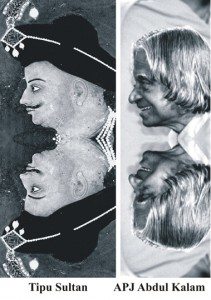 Abdul Kalam is considered a father of the Indian missile program and as such, he is often referred to as the “Missile Man.” The father of the Indian space program is Vikram Sarabhai and, in tribute, the Indian Space Research Organization’s largest facility is called the Vikram Sarabhai Space Center. Let us learn about these two leaders of Indian rocket research.
Abdul Kalam is considered a father of the Indian missile program and as such, he is often referred to as the “Missile Man.” The father of the Indian space program is Vikram Sarabhai and, in tribute, the Indian Space Research Organization’s largest facility is called the Vikram Sarabhai Space Center. Let us learn about these two leaders of Indian rocket research.
APJ Abdul Kalam grew up in the Madras island municipality of Rameswaram in the South of India. As a boy, he and his best friend, Jallaludin, would take walks at the close of the day, discussing God and spiritual matters. Though Abdul was raised a Muslim, he and Rameswaram would visit the Hindu temple of Lord Shiva. As a ritual, they walked around the temple in reverence and as they did, Jalludin and Abdul “felt a flow of energy” pass through them. (1)
Later in life, when visiting the Sivananda Ashram near the Ganges river, Abdul described “feeling intense vibrations” when he entered the ashram. (2) In another episode, Kalam described a scene in which his father arranged for a ceremony at a mosque to celebrate an advancement in his career: “I could feel the power of God flowing in a circuit through my father to me and back to God; we were all under the spell of the prayer.” (3)
A sense of the spiritual has never left APJ Kalam and he has never seen science and spirituality as conflicting interests. Indeed, Kalam has stated that for him science has always been the path to spiritual enrichment and self-realization.” (4)
Further, the fire of Shiva, the transformer, seems to flow through his veins. Fire is prominent in the writings of APJ Abdul Kalam. His autobiography is entitled, Wings of Fire, and another book he has written is called, Ignited Minds, which refers to the children of India and the potential they have to make India a sophisticated and developed nation.
Abdul Kalam has an Innate Fascination for Flight
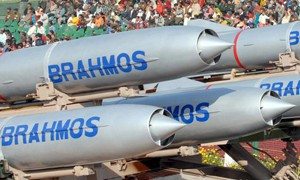 As a boy, Abdul dreamed to fly, and like Leonardo da Vinci, he studied the flight of birds. Later in life, as a young man, Abdul entered the Madras Institute for Technology (MIT) to become an engineer. Here too, he noted a fascination for flying machines. In his autobiography, he describes his admiration for aircraft and their systems that were on display at MIT. He writes, “I felt a strange attraction towards them, and would sit near them long after other students had gone back to their hostel, admiring man’s will to fly free in the sky, like a bird.” (5)
As a boy, Abdul dreamed to fly, and like Leonardo da Vinci, he studied the flight of birds. Later in life, as a young man, Abdul entered the Madras Institute for Technology (MIT) to become an engineer. Here too, he noted a fascination for flying machines. In his autobiography, he describes his admiration for aircraft and their systems that were on display at MIT. He writes, “I felt a strange attraction towards them, and would sit near them long after other students had gone back to their hostel, admiring man’s will to fly free in the sky, like a bird.” (5)
Indeed, Kalam’s greatest ambition and desire at the time was to become an officer in the Indian Air Force. Kalam went through the application process and it was a terrible disappointment to him when he was rejected by the Air Force Selection Board, just missing the cutoff for becoming a flyer.
Though his dream of becoming a pilot was thwarted, APJ Abdul Kalam took a post with the Ministry of Defense, where he became a Senior Scientific Assistant for the Directorate of Technical Development and Production (DTD&P). Kalam would not be flying aircraft, but he would be involving in designing them. In one project, Kalam led a team that developed a battlefield hovercraft and Abdul indeed flew in this devise, though only a few inches off the ground. His next developmental step involved an interview with Professor Vikram Sarabhai, as the Indian Committee for Space Research was interested in hiring Kalam for the post of “Rocket Engineer.”
Abdul Kalam and Vikram Sarabhai Experince a Natural Sympathy
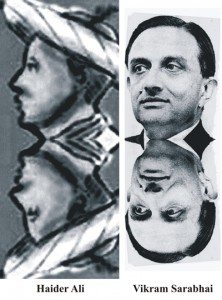 An immediate rapport developed between Kalam and Sarabhai. Kalam was impressed with Sarabhai’s warmth, perceptive nature, contagious optimism and vision. Sarabhai, Kalam observed over time, was an innovator, experimenter and leader who inspired the people under him by demonstrating faith and trust that they would succeed. Rather than giving directions, Sarabhai encouraged the exchange of ideas which led to a collective solution to a problem.
An immediate rapport developed between Kalam and Sarabhai. Kalam was impressed with Sarabhai’s warmth, perceptive nature, contagious optimism and vision. Sarabhai, Kalam observed over time, was an innovator, experimenter and leader who inspired the people under him by demonstrating faith and trust that they would succeed. Rather than giving directions, Sarabhai encouraged the exchange of ideas which led to a collective solution to a problem.
The tone in which Kalam writes of Vikram Sarabhai reveals that over the years, Abdul developed a deep love and admiration for Sarabhai, much more so than with any other professional colleague. He was deeply saddened when Vikram Sarabhai suddenly and unexpectedly died of a myocardial infarction at the age of 52, at the prime of his career. Kalam later referred to Vikram Sarabhai as the Mahatma Gandhi of Indian science.
Abdul Kalam’s Pride in Military Rockets of Tipu Sultan displayed at NASA
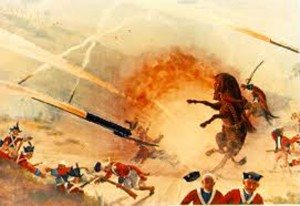 In addition to his fascination with flight, Abdul Kalam has maintained an ardent passion for India to become self sufficient and that societal advancements be made through the development of indigenous technology, not from technology imported from the Western world. Indeed, one of his most treasured experiences derives from a Western power’s acknowledgement of India’s pioneering contributions to field of missile technology.
In addition to his fascination with flight, Abdul Kalam has maintained an ardent passion for India to become self sufficient and that societal advancements be made through the development of indigenous technology, not from technology imported from the Western world. Indeed, one of his most treasured experiences derives from a Western power’s acknowledgement of India’s pioneering contributions to field of missile technology.
The setting for this experience is NASA’s Wallops Flight Facility, in Maryland. As a leading engineer in India’s missile program, Kalam had been invited by NASA to participate in a six month training program on rocket launching techniques.
At the Wallops center, Kalam observed a painting that was hung in the reception lobby, depicting a battle scene in which rockets are being launched against oncoming troops. Curiously, the soldiers launching the rockets were all dark-skinned, while the targets of the rockets were white-skinned troops in what appeared to be British uniforms. Kalam took a closer look and realized that the painting was of a battle between Tipu Sultan’s army and colonial British troops on Indian soil.
Tipu Sultan is considered, along with his father, Haider Ali, as a pioneer of rocket development. Kalam was quite amazed that an Indian was being honored at a NASA facility, while back home, most of his fellow Indians had forgotten about Tipu Sultan.
Though the Chinese were the first to invent rockets, which they used for ceremonial purposes, it was Haider Ali and Tipu Sultan who are accredited with developing rockets for military purposes. The innovation that made the rockets used by Haider Ali and Tipu Sultan more effective was the use of iron casings, which allowed the attainment of greater chamber pressures and accordingly, greater range. Some of these rockets could fly 1000 yards.
The base of the rocket consisted of an iron tube that was eight inches long and 2-3 inches in diameter. The warhead of the rocket consisted of a bamboo shaft four feet in length, though the design was altered for specific purposes and effects. For example, some of Haider Ali’s rockets had pierced metal cylinder skins which would emit sparks as the rocket flew, which would set fire to objects along its path.
Abdul Kalam Admires Tipu Sultan’s Rockets at the British Firepower Royal Artillery Museum in Woolwich
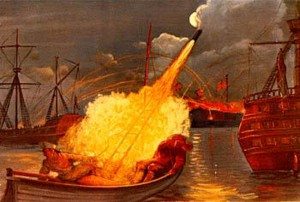 Two of Tipu Sultan’s rockets on display at the Woolwich Royal Artillery Museum in Southeast London have sword blades as warheads. Abdul Kalam made the trip to this museum view these munitions.
Two of Tipu Sultan’s rockets on display at the Woolwich Royal Artillery Museum in Southeast London have sword blades as warheads. Abdul Kalam made the trip to this museum view these munitions.
Tipu Sultan also developed wheeled rocket organs which could fire multiple rockets simultaneously. It is estimated that the army of Tipu Sultan had 27 brigades, which were called Kushoons. A company of 200 rocket men, called Jourks were assigned to each brigade. Tipu Sultan authored a military manual, entitled Fathul Mujahidin, in which the structure and functions of his military units were delineated.
We have seen in independently researched reincarnation cases, such as in the cases of Paul Gauguin | Peter Teekamp and John Elliotson | Neurosurgeon Norm Shealy, and Ryerson-Semkiw reincarnation cases of David Rittenhouse | Carl Sagan and Alexandra Nechita | Pablo Picasso, how interests, passions and talents can extend across lifetimes. We now observe this phenomenon in the case of Abdul Kalam, for in my work with Kevin Ryerson, Ahtun Re, the Egyptian spirit guide who has demonstrated an ability to make accurate past life matches, has confirmed that Kalam is the reincarnation of Tipu Sultan.
Ahtun Re has also confirmed that APJ Kalam’s great mentor, Vikram Sarabhai, is the reincarnation of Haider Ali, the father of Tipu Sultan. As father and son, Haider Ali and Tipu Sultan built the Indian nation of Mysore and were pioneers of military rocketry, while as mentor and student, Vikram Sarahai and APJ Abdul Kalam built the Indian space and missile program, greatly enhancing India’s stature among the world’s nations. Indeed, APJ Kalam credits India’s space and missile program as India’s ticket into the league of world superpowers. Let us learn more about Haider Ali and Tipu Sultan, who ruled the region called Mysore for a period of 38 years.
The History of Mysore, Haider Ali and Tipu Sultan
 Mysore is a district in South India 140 kilometers from Bangalore. Haider Ali was born around 1722. Sources differ slightly regarding his exact year of birth. Haider Ali’s father was Fateh Mohammad and he had a brother, Shabiz, who became a soldier in the Mysore army. Haider Ali joined his brother on a campaign and distinguished himself in military service. He also demonstrated an interest in military engineering, visiting French troops in Pondicherry, where he admired the skill of the French engineering officers. Haider Ali was noted to have “a most retentive memory” and “keen penetration.” (6)
Mysore is a district in South India 140 kilometers from Bangalore. Haider Ali was born around 1722. Sources differ slightly regarding his exact year of birth. Haider Ali’s father was Fateh Mohammad and he had a brother, Shabiz, who became a soldier in the Mysore army. Haider Ali joined his brother on a campaign and distinguished himself in military service. He also demonstrated an interest in military engineering, visiting French troops in Pondicherry, where he admired the skill of the French engineering officers. Haider Ali was noted to have “a most retentive memory” and “keen penetration.” (6)
Due to his military skills, in 1755, Haider Ali was appointed as military commander of Budikot, in Mysore. Haider Ali demonstrated significant organizational skills. He realized that the colonial powers of England and France had developed efficient systems of military command and he organized his own army in a similar way. Haider Ali even manufactured military equipment based on English and French weaponry. Eventually, the entire Mysore army was placed under his command in 1757. When Haider Ali defeated an invading force of Marhattas, a rival Hindu group of people, the Hindu Maharaja of Mysore, gave him the title of Fateh Bahadur. Haider Ali was made Chief Minister of Mysore in 1761 and when the Maharaja died in 1766, Haider Ali himself became the ruler of Mysore.
In this capacity, Haider Ali proved to be a great administrator. It was documented that he had the “faculty of giving his attention to several subjects at the same time, so that he could hear a letter read, dictate orders, and witness a theatrical exhibition all at once, without being distracted by any one of these occupations.” (8) During his reign, Haider Ali improved the infrastructure of Mysore, building roads and gardens. The fortifications of Bangalore and Seringapatam where constructed by Ali. He was tolerant to other faiths. Haider Ali was also diplomatic with people and it was noted that he did not generate personal enemies.
The First Mysore War
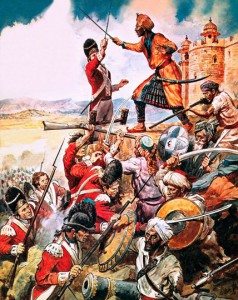 Unfortunately, military campaigns continued though out Ali’s period of rule. The First Mysore War was started in 1767 when the British formed an alliance with the Marhattas, who controlled northern and central India, and the Nizam of Hyderabad. Nizam was the name of the ruler of a dynasty, which maintained Hyderbad as its capital. Haider Ali controlled the Madras territory and southern India. Despite this alliance made up of the British, the Marahattas and the Nizam, Haider Ali was able defeat the British led forces. In the peace treaty that followed, the British were required to assist Haider Ali if Mysore was attacked by other powers.
Unfortunately, military campaigns continued though out Ali’s period of rule. The First Mysore War was started in 1767 when the British formed an alliance with the Marhattas, who controlled northern and central India, and the Nizam of Hyderabad. Nizam was the name of the ruler of a dynasty, which maintained Hyderbad as its capital. Haider Ali controlled the Madras territory and southern India. Despite this alliance made up of the British, the Marahattas and the Nizam, Haider Ali was able defeat the British led forces. In the peace treaty that followed, the British were required to assist Haider Ali if Mysore was attacked by other powers.
Mysore Rockets of Haider Ali and Tipu Sultan help win the Second Mysore War
When the Marhattas again attacked Mysore in 1771, the British reneged on their promise and refused to assist Haider Ali. This caused Ali to make an alliance with the French. The Second Mysore War started in 1780 when the British planned to attack French troops in the region and Haider Ali refused to assist the British. The English then made an alliance, once again, with the Marhattas and Nizam of Hyderbad and declared war on Haider Ali and Mysore. In the Second Anglo-Mysore war, at the Battle of Pollilur (September 10, 1780), Haider Ali and Tipu Sultan achieved a grand victory. One factor that helped them in their win was that one of the British ammunition carts was set on fire by Mysorean rockets.
The Death of Haider Ali
 Haider Ali led 80,000 men and 100 guns on campaign and in October 1780, he scored a victory in capturing Arcot. In 1781, though, he was defeated near Madras. It is reported that Haider Ali developed a suppurative tumor of the back, which led to his death at this camp outside Chittur, on December 7, 1172, in the midst of this campaign. When he received the news of his father’s death, Tipu Sultan marched to Chittur with 90,000 troops took command of the Mysore army.
Haider Ali led 80,000 men and 100 guns on campaign and in October 1780, he scored a victory in capturing Arcot. In 1781, though, he was defeated near Madras. It is reported that Haider Ali developed a suppurative tumor of the back, which led to his death at this camp outside Chittur, on December 7, 1172, in the midst of this campaign. When he received the news of his father’s death, Tipu Sultan marched to Chittur with 90,000 troops took command of the Mysore army.
Tipu Sultan then moved on to the British held fort at the seaport of Mangalore and with the help of French engineers, began a siege. The battle coincided, though, with time that the British and French came to a peace accord, following the American Revolutionary War. The French engineers who were helping Tipu Sultan were thus bound to withdraw their assistance. Tipu Sultan, indignant at the withdrawal of the French, was forced to convert the siege into a blockage. Tipu eventually secured victory over the British in 1783, winning the Second Mysore War. Through the treaty that was signed in January 1784, the territory that Tipu Sultan now controlled was vastly expanded.
The Technologic Rule of Tipu Sultan
Let us now review the life of Tipu Sultan. He was born on December 10, 1750 at Devanhalli. Tipu was trained as a military leader from his boyhood years and starting at the age of 15, he would join his father, Haider Ali, on military campaigns. Tipu Sultan loved to learn and had a library of 2000 books. In particular, Tipu studied math and science. He was described as very dynamic.
After his father died, Tipu Sultan took control of Mysore and he was considered a benevolent and enlightened ruler. He worked dynamically to advance the welfare of his people. For example, to promote agriculture, Tipu Sultan constructed dams and tanks to water crops, was well as roads to transport goods to market. Tipu Sultan created industries, building factories in Cutch, Masquat, and Jedda. He encouraged commerce with neighboring countries, such as Oman, Persia and Turkey. Tipu built forts and palaces. A Muslim, Tipu forbade liquor in Mysore, but he treated his non-Muslim subjects well. He invited foreign know-how to build factories to produce glass, mirrors and ship-building. He aimed at making his kingdom the most prosperous state of India. Tipu Sultan was also sought information on the latest scientific developments from around the world.
Tipu Sultan was a great supporter of the independence of his nation from colonial powers and in this light, was wary of the British East India Company’s plans to expand its influence across India. In order to strengthen his position against the British, Tipu made alliances with the French, Sultan of Turkey and the Amir of Afghanistan. In 1787, Tipu even sent a delegation to Paris, which met with Louis XVI, in an effort to strengthen his alliance with the French.
The Third Mysore War and the Attack of Lord Cornwallis by the Rocketmen of Tipu Sultan | Abdul Kalam, as Depicted at the NASA Wallops Flight Facility
 The British, aware of Tipu Sultan’s growing power, after making alliances once again with the Nizam of Hyperabad and Marhattas, started the Third Mysore War in 1790. In January 1791, Lord Cornwallis took command of the British troops at Vellore, determined to undertake the siege of Bangalore. When Cornwallis moved through the Mugli Pass, they were attacked by the Tipu Sultan’s rocket men. (8)
The British, aware of Tipu Sultan’s growing power, after making alliances once again with the Nizam of Hyperabad and Marhattas, started the Third Mysore War in 1790. In January 1791, Lord Cornwallis took command of the British troops at Vellore, determined to undertake the siege of Bangalore. When Cornwallis moved through the Mugli Pass, they were attacked by the Tipu Sultan’s rocket men. (8)
In reflection, perhaps the painting displayed in the lobby of the NASA Wallops Flight Facility, which gave Abdul Kalam such a feeling of validation, was stirring an unconscious memory or knowing in Kalam, that it was a battle that he once led. If APJ Kalam is indeed the reincarnation of Tipu Sultan, at Wallops, he received recognition of his own contributions to rocket technology, made over 200 years ago.
In the end, though, Tipu Sultan was defeated in the Third Mysore War. In a treaty signed in Seringapatam, his capital city, on March 22, 1792, Tipu Sultan had to give up half his kingdom and pay damages to the British and their allies of 33 million rupees.
The Fourth Mysore War and the Death of Tipu Sultan
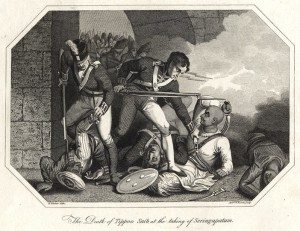 After his defeat in 1792, Tipu Sultan rebuilt his military with the assistance of the French. The British considered this a violation of the treaty of Seringapatam, which led to their attack on Mysore in 1798, which signaled the start of the Fourth Mysore War. Tipu was eventually cornered in this capital, Seringapatam. Once again, Tipu Sultan’s rocket men were involved in the battle. Tipu tried to evade capture by riding through the combat zone on his horse, but took a gun shot to the breast. He incurred a second wound in the right side as his horse fell from under him.
After his defeat in 1792, Tipu Sultan rebuilt his military with the assistance of the French. The British considered this a violation of the treaty of Seringapatam, which led to their attack on Mysore in 1798, which signaled the start of the Fourth Mysore War. Tipu was eventually cornered in this capital, Seringapatam. Once again, Tipu Sultan’s rocket men were involved in the battle. Tipu tried to evade capture by riding through the combat zone on his horse, but took a gun shot to the breast. He incurred a second wound in the right side as his horse fell from under him.
Tipu Sultan’s attendants picked him up and implored him to surrender to British officers, knowing that he would be spared. Tipu Sultan refused. One British soldier tried to grasp Tipu’s jewel encrusted sword belt. Tipu, though himself wounded, struck out with his sword and cut a gash in the soldier’s knee. In retaliation, the British soldier pulled out his musket and shot Tipu Sultan in the head, which caused instant death. This occurred in May 1799. Tipu Sultan was later was entombed in the “Gumbaz,” a mausoleum which he himself built, where he rests with Haider Ali and his mother, Fatima Begum.
Tipu Sultan’s Rocketmen Reincarnate in Germany and the Vikram Sarabhai Space Center
 In a moment, we will observe how character traits have remained consistent in the cases of Vikram Sarabai and APJ Abdul Kalam. First, I would like to just comment that other karmic ties have also been renewed in contemporary times and that many of the engineers and scientists that Sarabai and Kalam worked with in developing missile technology were also with them in the era of Haider Ali and Tipu Sultan, as confirmed by Kevin Ryerson’s spirit guide, Ahtun Re.
In a moment, we will observe how character traits have remained consistent in the cases of Vikram Sarabai and APJ Abdul Kalam. First, I would like to just comment that other karmic ties have also been renewed in contemporary times and that many of the engineers and scientists that Sarabai and Kalam worked with in developing missile technology were also with them in the era of Haider Ali and Tipu Sultan, as confirmed by Kevin Ryerson’s spirit guide, Ahtun Re.
For example, it is thought that Haider Ali’s minister Muhamed Sadik reincarnated as Brahm Prakash, the first Director of the Vikram Sarabhai Space Center. Even the great rocket scientist, Wernher von Braun, was with Tipu Sultan, perhaps in the persona of Sultan’s trusted commander, Burhan-ud-din. A launch from the Vikram Sarabhai Space Center is provided in the image to the right.
Let us now review personality traits that Vikram Sarabhai and Haider Ali have in common.
Character Traits Shared by Haider Ali and Vikram Sarabhai
Colorful Clothing-Haider Ali was fond of bright colored clothes, as was Vikram Sarabhai, who wore loud colored shirts.
Talent in Administration-As described above, Haider Ali had a powerful memory and keep perception. He was able to multitask easily in performing the duties required to run his domain. Vikram Sarabhai was also a gifted manager, who not only ran India’s space program, but at the same time directed operations of his family’s pharmaceutical, chemical, glass, agricultural and engineering companies. Like Haider Ali, Vikram Sarabhai was frequently observed multitasking, running industrial operations, while mentoring students at the same time.
Resourcefulness-Haider Ali was a very resourceful military commander, finding opportunities in a creative manner. Abdul Kalam has also noted that noted Vikram Sarabhai was a resourceful, at times unconventional manager, who successfully ran India’s space program that was lacking sufficient funds and staff.
Replicated Foreign Military Equipment-Haider Ali was reported to copy French and English military equipment. Vikram Sarabhai obtained a Russian RATO motor, used to assist jets in taking off in adverse conditions, which was used to engineer an Indian RATO motor. Abdul Kalam participated in this effort.
Accessible-Haider Ali was said “to be accessible to all and to have conversed with great readiness.” (9) Vikram Sarabhai was also reported to look upon all men as equals. It was noted that even a servant could approach him freely and converse with him in an open manner.
Character Traits shared by Tipu Sultan and APJ Abdul Kalam
Simple habits-Tipu Sultan ate common food and slept on coarse canvas. Abdul Kalam has maintained simple quarters and has, at times, refused to accept more privileged living quarters, when offered to him, such as when he was leading the Satellite Launch Vehicle 3 team in Thumba.
Causal Dress-Tipu Sultan preferred very simple dress, in contrast to his father, who liked colorful dress. Abdul Kalam has always preferred causal dress and when invited to meet Prime Minster Indira Gandhi after the first successful launch of an Indian Satellite Launch Vehicle, he wore casual dress and slippers for the meeting.
Abstinence-Tipu Sultan maintained abstinence from alcohol, for himself and his domain. It has been described that Tipu Sultan was not swayed by women. Abdul Kalam abstains from alcohol, is a vegetarian and has practiced celibacy.
Poetry-Tipu Sultan was known as a decent poet. Abdul Kalam likes to write poetry and his verses are found in his biography, Wings of Fire. Abdul Kalam also has published poetry books entitled, My Journey and The Life Tree.
Spiritual Scientists-Tipu Sultan enjoyed religious books, yet he was also greatly interested in the latest scientific discoveries and inventions. Abdul Kalam is a scholar of several holy texts and is even familiar with the clairvoyant philosopher Rudolf Steiner, who is well known for advocating the development of a spiritual science
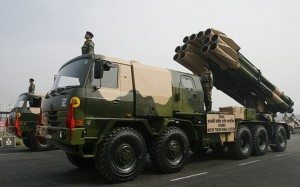 Innovation-Tipu Sultan was known to have a “rage” for innovations. Tipu created new measures, a new calendar, coinage and a manual on military matters. Tipu created a shipbuilding facility and as part of this project, he developed a new non-magnetic alloy for shipbuilding. Abdul Kalam has also demonstrated an interest in material science and has admitted a fascination with composites, which can be seen as akin to alloys. A very specific parallel involves Tipu Sultan’s development of wheeled rocket organs which could fire multiple rockets simultaneously. In his book, Ignited Minds, Abdul Kalam notes with some pride that India has produced a modern multi-barrel rocket launcher called the Pinaka. Like Tipu Sultan, Abdul Kalam is an acknowledged innovator.
Innovation-Tipu Sultan was known to have a “rage” for innovations. Tipu created new measures, a new calendar, coinage and a manual on military matters. Tipu created a shipbuilding facility and as part of this project, he developed a new non-magnetic alloy for shipbuilding. Abdul Kalam has also demonstrated an interest in material science and has admitted a fascination with composites, which can be seen as akin to alloys. A very specific parallel involves Tipu Sultan’s development of wheeled rocket organs which could fire multiple rockets simultaneously. In his book, Ignited Minds, Abdul Kalam notes with some pride that India has produced a modern multi-barrel rocket launcher called the Pinaka. Like Tipu Sultan, Abdul Kalam is an acknowledged innovator.
Daring-Tipu Sultan often said, “It is better to live one day like a lion than a hundred years like a sheep”. Abdul Kalam has stated, “I prefer a dash of daring and persistence to perfection.”
Hardworking-It has been said the Tipu Sultan worked from dawn to midnight for the welfare of his subjects. Abdul Kalam is known to work 18 hour days and is an admitted workaholic.
Dedication to the Advancement of Country-Tipu Sultan worked effortlessly to advance his realm in terms of technological advancement and economic development. He even came to call himself, “Citizen Tipu Sultan”, to reflect his social consciousness. Abdul Kalam has similarly striven to make India a developed, prosperous nation and a world power, as outlined in his book, India 2020, A Vision for the New Millennium.
Pride of Indigenous Achievement and Independence-Tipu Sultan greatly resented the British presence in India and strove to push the British and the East India Company out of the region. Tipu made alliances with France in this effort, though he was disappointed by the French when they pulled out of combat when a peace treaty with Britain had been signed. Abdul Kalam is an ardent supporter of indigenous production of needed technology and products, in large part due to Kalam’s understanding that dependence on foreign technology and products makes the India to vulnerable. Kalam, by the way, was involved in a missile project with the French which ended when, similarly, the French suddenly pulled out. It is almost as if Abdul Kalam brought with him the experiences of Tipu Sultan, which resulted in his insistence of India being independent, not only politically, but technologically.
The Affinity of Abdul Kalam for Tipu Sultan
 Of course, the trait that Tipu Sultan and Abdul Kalam have in common, that is most striking, is their mutual fascination with rocketry. As indicated in his experience at Wallops, APJ Abul Kalam has shown great interest in Tipu Sultan. On a recent visit to Bangalore in 1991, Kalam expressed a desire to visit Tipu Sultan’s court in Srirangapatna. It was also noted that Kalam wistfully related that Tipu Sultan’s legacy as a pioneer of rocketry has largely been forgotten, even in Tipu Sultan’s own region, though a Tipu Sultan Shaheed Memorial Lecture is regularly held in Bangalore. Abdul Kalam, appropriately, was the speaker at this forum in November 30, 1991.
Of course, the trait that Tipu Sultan and Abdul Kalam have in common, that is most striking, is their mutual fascination with rocketry. As indicated in his experience at Wallops, APJ Abul Kalam has shown great interest in Tipu Sultan. On a recent visit to Bangalore in 1991, Kalam expressed a desire to visit Tipu Sultan’s court in Srirangapatna. It was also noted that Kalam wistfully related that Tipu Sultan’s legacy as a pioneer of rocketry has largely been forgotten, even in Tipu Sultan’s own region, though a Tipu Sultan Shaheed Memorial Lecture is regularly held in Bangalore. Abdul Kalam, appropriately, was the speaker at this forum in November 30, 1991.
Kalam has also visited the Woolridge Firepower: Royal Artillery Museum near London and related that he felt thrilled when he saw Tipu’s rockets. In this light, the case of Tipu Sultan | Abdul Kalam is indeed another “affinity case,” in which an individual is attracted to their own past life persona. Other affinity cases include the reincarnation cases of Dorothy Dandridge | Halle Berry and Laurel & Hardy | Bacher Boys.
If these reincarnation cases are accepted, they demonstrate the following features:
Principles of Reincarnation & Understanding Past Lives

Past Life Talent: As described above, talents are replicated in the cases of Ali Haider | Vikram Sarabhai and Tipu Sultan | Abdul Kalam, as well as in the proposed reincarnation cases of Muhamed Sadik | Brahm Prakash and Burhan-ud-din | Wernher von Braun
Renewal of Relationships through Reincarnation: Father and son, Ali Haider and Tipu Sultan, were reunited as mentor and protege, Vikram Sarabhai and Abdul Kalmam. In addition, it is believed that the other rocket men of Mysore, Muhamed Sadik and Burhan-ud-din, reincarnated as the contemporary rocket scientists, Brahm Prakash and Wernher Von Braun, respectively.
Change of Religion, Nationality or Ethnic Affiliation from One Incarnation to Another: Ali Haider was Muslim, whereas Vikram Sarabhai was of the Jain religion. Ahtun Re has indicated that Wernher von Braun, who was German and born into the Christian Lutheran religion, was involved with Tipu Sultan’s rocket program in a past lifetime, which would have likely made him a Muslim from Mysore.
Affinity Case: Abdul Kalam has been attracted to his own past life persona, even taking joy in his visit to the Woolwich Firepower: Royal Artillery Museum London, where he admired Tipu Sultan’s rockets, which were on display. He also took pride in seeing the painting of Tipu’s rocketmen in battle against the British, which was hung at NASA’s Wallops Flight Facility, in Maryland. Kalam had a desire to visit Tipu Sultan’s court and he has expressed sadness that Tipu has been largely forgotten. Tipu engineered a missle organ that fired multiple rockets at a time, which India also developed in contemporary times, an accomplishment Abdul Kalam has been proud of.